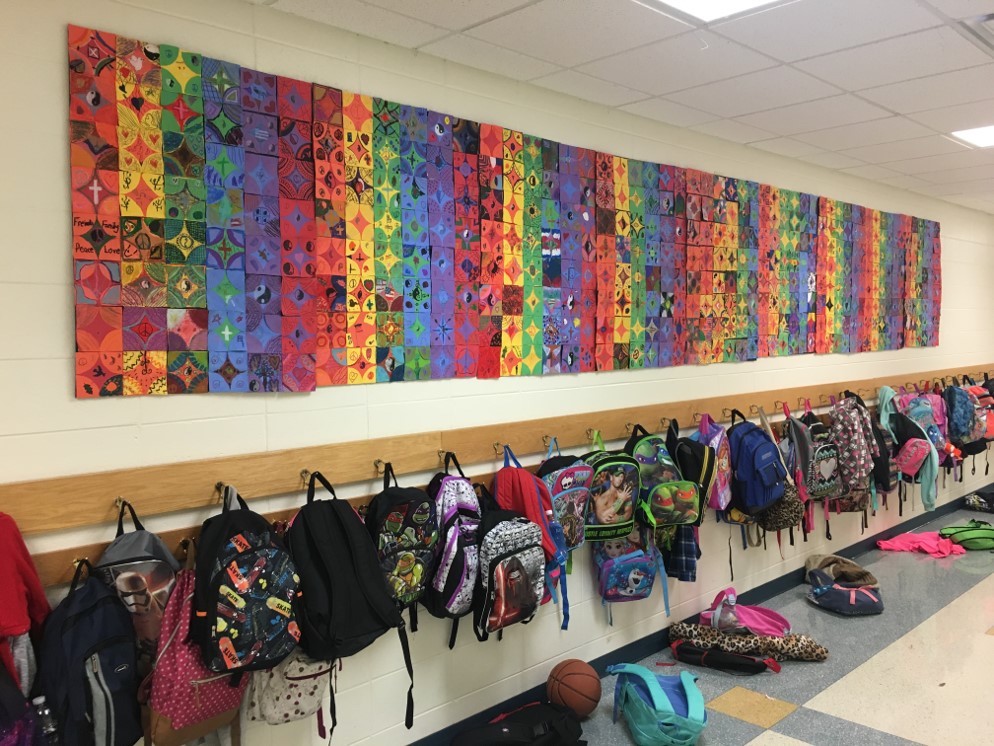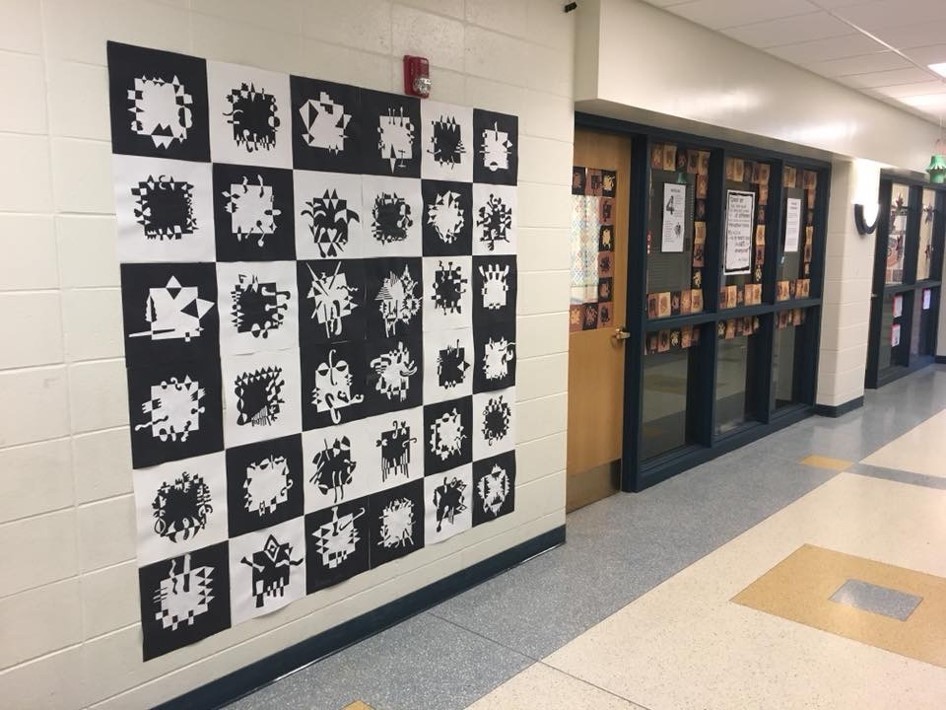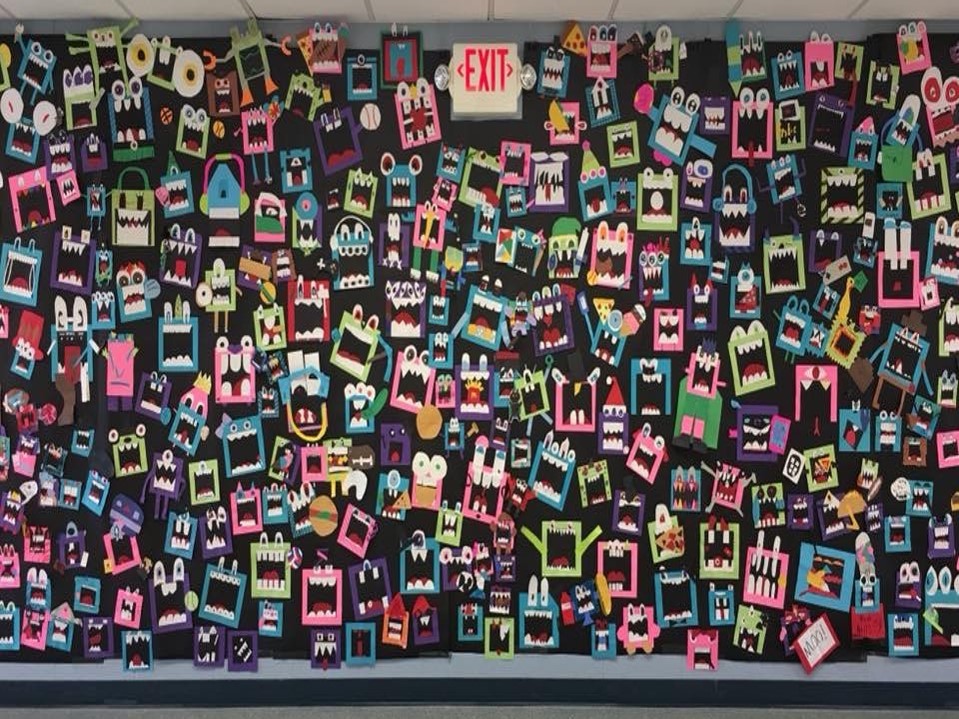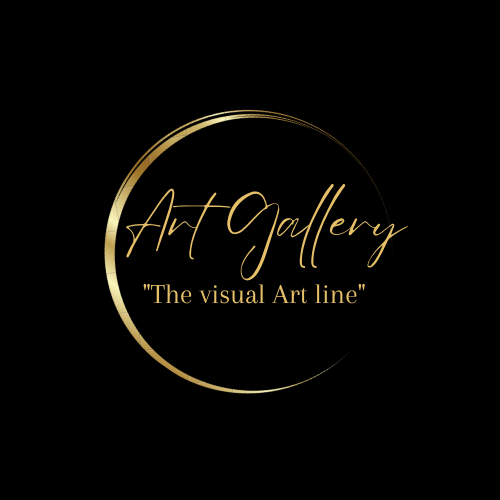-
Demystify Stem and inspire girls to pursue the subjects, careers
courtesy of
Product editor
Daily Monitor Monday, May 15, 2023.
Research shows that there are 200 million fewer women online than men and in Uganda, women have less access to and use of ICT skills than men.
Nakanyonyi Girls’ School, Jinja, celebrated the International Girls in ICT Day- which happens every fourth Thursday of April— with 10 brand new computers and books for their school library on April 27. The celebration meant to interest more girls in the science, technology, engineering, and Maths (STEM) education and careers.
Learners of Nakanyonyi Girls’ School, Jinja listen to a mentor talking about STEM subjects. Photos/Promise Twinamukye.
For girls and young women to thrive in STEM, they ought to acquire skills to become ICT users and creators in the digital world.
Under the theme Digital Skills for Life, American Tower Corporation Uganda (ATC) and Stanbic Bank celebrated the day at Nakanyonyi Girl’s School in Jinja to inspire and encourage girls to pursue a future in ICT.
Students from Senior One to Senior Three attended mentorship and career guidance sessions leaning towards STEM subjects. Engineers, accountants and ICT personnel from both companies temporarily offered time to the students to ask about anything concerning STEM subjects and career prospects. They also demystified myths surrounding these subjects.Get a mentor
One of the people that came with Joanita Asio Banda, head of production services at Stanbic Bank, said her father kept pushing her towards Science subjects and believed in her. However, the start was hard due to bias. Additional Maths was treated as a boys’ subject and for A-Level students.
Asio says the first thing her teacher told her then class of 14 was that most of them would drop out sooner or later. Within two weeks, students opted for subject they thought were simpler. She stayed and got a hang of it through relating with Senior Six students who read the same subject. -
VISUAL ART
The visual arts are art forms that create works that are primarily visual in nature, such as ceramics, drawing, painting, sculpture, printmaking, design, crafts, photography, video, film making and architecture .
The current usage of the term “visual arts” includes fine art as well as the applied, decorative arts and crafts, but this was not always the case. Before the Arts and Crafts Movement in Britain and elsewhere at the turn of the 20th century, the term ‘artist’ was often restricted to a person working in the fine arts (such as painting, sculpture, or printmaking) and not the handicraft, craft, or applied art media. The distinction was emphasized by artists of the Arts and Crafts Movement who valued vernacular art forms as much as high forms. Art schools made a distinction between the fine arts and the crafts maintaining that a craftsperson could not be considered a practitioner of art.
In an interview with one of Artist shared with us the idea of art where he said that Art is like a language used to communicate to another to simplify communication.

Ssebidde George Wilson (Artist)
He adds that Public art is exactly that, art in public spaces. The term “public art” may conjure images of historic bronze statues of a soldier on horseback in a park. Today, public art can take a wide range of forms, sizes, and scales—and can be temporary or permanent. Public art can include murals, sculpture, memorials, integrated architectural or landscape architectural work, community art, digital new media, and even performances and festivals!
the advice i can give to artists out there is that to practice, practice, practice: Draw something every day, even if it’s just a doodle. Keep all your artwork even if you don’t like it so you can see the improvement over time. DON’T COMPARE: Looking at other artists for inspiration is great, but don’t compare your work to others and let it get you down.

George showing his art pieces at his home
The visual arts are art forms that create works that are primarily visual in nature, such as ceramics, drawing, painting, sculpture, printmaking, design, crafts, photography, video, film making and architecture .
The current usage of the term “visual arts” includes fine art as well as the applied, decorative arts and crafts, but this was not always the case. Before the Arts and Crafts Movement in Britain and elsewhere at the turn of the 20th century, the term ‘artist’ was often restricted to a person working in the fine arts (such as painting, sculpture, or printmaking) and not the handicraft, craft, or applied art media. The distinction was emphasized by artists of the Arts and Crafts Movement who valued vernacular art forms as much as high forms. Art schools made a distinction between the fine arts and the crafts maintaining that a craftsperson could not be considered a practitioner of art.
In an interview with one of Artist shared with us the idea of art where he said that Art is like a language used to communicate to another to simplify communication.

Ssebidde George Wilson (Artist)
He adds that Public art is exactly that, art in public spaces. The term “public art” may conjure images of historic bronze statues of a soldier on horseback in a park. Today, public art can take a wide range of forms, sizes, and scales—and can be temporary or permanent. Public art can include murals, sculpture, memorials, integrated architectural or landscape architectural work, community art, digital new media, and even performances and festivals!
the advice i can give to artists out there is that to practice, practice, practice: Draw something every day, even if it’s just a doodle. Keep all your artwork even if you don’t like it so you can see the improvement over time. DON’T COMPARE: Looking at other artists for inspiration is great, but don’t compare your work to others and let it get you down.

George showing his art pieces at his home
-
The 4 Projects for a Great Art Show
Now that spring is in full swing, you may be counting down the days to your school art show. Art educators across the country are frantically trying to finish projects and plan for an impressive display. Art shows are a great way to showcase your students’ work and highlight their achievements. The event can be a confidence-booster for your creative students and an advocacy tool for your community.

KeithArts Traditional school art shows consist of artwork curated by the teacher or self-selected by students. Each student has at least one artwork on display. This is a great way to show students they are all appreciated and represented in your art show. As families enter your building, all of your students will have an opportunity to show off the work they created in your classroom.
While individual projects give each student a chance to shine, consider a few new additions to your art show this year. Collaborative installations can be another way for students to have a big impact at your spring art show.
When teachers hear the word “collaborate,” they sometimes think of chaos and stress. But, collaborations can be perfect at this time of year! Students need to move, problem-solve, and work together to encourage engagement through the end of the school year. A collaborative installation can be an awesome addition to your annual art show.
1. Paper Quilt Display
Paper quilts are a simple, eye-catching collaboration with a rich art and design history. You can tie in elements and principles of design and review skills you want to make sure your students have mastered. Concepts like pattern, symmetry, color, repetition, shapes, geometry—the list could go on and on—are easy to build right in!

When you’re looking for examples to share with students, look to the past with famous quilt designs like Gee’s Bend. You can also look to contemporary examples, like the textile designer Libs Elliott.
Have each of your students create a paper square and assemble them for a group display. You can control the color scheme to achieve a more unified design or let the design take on a life of its own. This is also a wonderful example of how each individual impacts the whole class or school. When you remove one piece, the quilt is no longer complete; it’s missing something special. Use this as an analogy about how much they matter to your school community.2. Japanese Notans
Japanese notans are absolutely gorgeous paper cut designs. They look incredibly intricate and may seem intimidating if you haven’t tried them before. You will be surprised at the lengths your students will go to once they get the hang of the concept.

Students will need two squares of paper. One twice as large as the other. For example, a 6″ square and a 12″ square of contrasting colors. While black and white is the traditional notan combination, you can coordinate some fun displays with different color combinations as well.
Students will draw and/or cut shapes from their smaller squares and mirror the positive piece from its negative space. The pieces are glued down, and the resulting design is awe-inspiring. This is a great lesson for reviewing positive and negative space. The abstract component alleviates anxiety about what they are creating, so students can really let loose and experiment. This project works well for students who are often frustrated in art class. They can find success and take pride in their work.3. Greg Mike-Inspired Monsters
Greg Mike is a street artist based in Atlanta, Georgia. He has created murals all over the country, and many feature his signature character, LOUDMOUF. The character is recognizable with a few distinguishing characteristics: a blue square shape with a chipped tooth. While the character takes many different forms, these elements typically stay the same.This can be a fun project for students to create monsters of their own. They can all start with the same basic format but add their own creative touches to make their monster unique. This is another great analogy to share with your students as they are creating. We can identify the things we have in common with one another and celebrate our differences.

4. Split Portraits
Self-portraits are intimidating, even more so for students who are starting to be self-conscious about their artwork. Students seem to shut down if their work doesn’t look realistic enough. One way to combat this attitude is to give students a confidence booster with a project that helps them succeed. Split portraits give students a photo reference to assist in drawing the rest.

You can review the concept of symmetry and proportion and introduce some portrait drawing techniques in this lesson without overwhelming students. Have them fill their background with symbols, text, and scenery that represent their interests and personality.
A wall of split portraits with recognizable photos/drawings will be a big hit at your art show. Students will be proud to show off their work and have fun looking for their friends from other classes. Families and community members will be impressed at the drawing skills students learned in the process. -
ART GALLERY PROJECT

Artgallery
The Visual Art line
